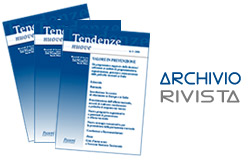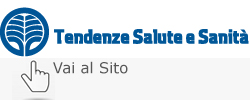Gennaro D’Amato
MD, FAAAAI, FERS, Fellow and Honorary member of EAACI. Chairman Committee World Allergy Organization on “Aerobiology and Climate change”; Former Director Division of Respiratory Diseases and Allergy, High Specialty Hospital A. Cardarelli, Naples and Former teacher School of Specialization in Respiratory Disease, University of Naples Federico IIF
Tendenze Nuove, Numero 1 – 2022; 1-6: DOI: 10.32032/TENDENZENUOVE20220105.PDF

Pollen allergy is a clinical discomfort for more than one in six Italians mainly manifested by frequent sneezing, itchy eyes, nasal obstruction, rhinorrhea, asthma and irritative cough (such as asthma equivalents)(1,2,3). Allergic manifestations have a noticeable impact, in negative terms, on the quality of life of affected subjects, with considerable influences also on other factors such as sleep and consequently on mood state.
In the months of intense pollination (generally from April to the end of June and beginning of July but frequently again during autumn in the so called low pollen season) complications for allergy sufferers are amplified; the use of antihistamine drugs, if not taken with the right methods and timing (as soon as the symptomatology begins and throughout the season), often results in a late intervention and it is rarely a solver, not exempt from some side effects(4). Further contraindications are related with the use of systemic corticosteroids, while those administered through inhalation are more tolerated and associated only with phenomena of nasal nosebleeds that would advise against their use(5); in the rare cases of allergic monosensitization, desensitizing therapy remains valid. The approach to the prevention and therapy of allergy due to mold and dust mites and epithelia of dogs and cats is generally based on respecting specific hygiene rules; the same measures applied in outdoor environments were useless and seemed, until recently, with no solution.
During the health emergency for the Covid 19 pandemic, the need for protection against SARS-CoV-2 forced the population to particular restrictions, both at national level prescribed by the Ministry of Health and for the implementation of regional decrees, which provided in particular for the obligation to use masks that limited the risk of contagion. The use of these devices suitable for the protection of the airways and the filtering of inhaled air was initially prescribed for both indoor and outdoor environments; and at the same time a significant reduction in influenza symptoms was observed, along with a very reduced frequency of allergic symptoms induced by pollen(6). These advantages have been maintained over time proportionally to the attention that citizens showed in complying with the provisions.
With the end of the emergency phase, the use of filtering devices such as masks has progressively reduced, although always recommended in indoor environment. Moreover, clinical practice has shown a significant reappearance of allergy-related symptoms. These observations confirm what emerged from similar studies that correlate the use of masks with the reduction of allergic symptoms in pollen seasons(7,8,9).
The recent World Health Organization (WHO) document of July 2022(10) highlights that individual protection measures must be emphasized and rigorously promoted on a community scale for the coming seasons, including the use of well-adapted masks, which should be used as part of a global “Do it all!”
Despite this, masks are poorly accepted by some and in any case cannot be used during physiological as well as essential daily activities, including eating.
The studies and the experience widely gained during the pandemic period, however, confirm the importance and effectiveness of prevention that certainly passes through the reduction of exposure to allergens and pollutants; in fact, we must not forget the incidence of airborne particles such as biological ones (bacteria and viruses as well as pollen and fungi but also inorganic pollution (particulate matter and probably also sand particles that are increasingly frequently transported from the deserts of North Africa to the Mediterranean area, due to climatic variations)(11); these components amplify the inflammatory state of the upper airways already compromised by allergic pathology.
For the prevention of allergic rhinitis, a new option could be represented by using specific endonasal devices that could respond to the need for protection from allergens without limiting normal daily activities and that above all could not significantly alter the ow of air inhaled. Some of these endonasal devices with lter function are currently certi ed as medical devices in both Europe and the USA, representing a new health technology and therefore suitable for use in clinical practice(12). A position paper by the World Allergy Organization reports that nasal lters act as invisible respiratory masks con ned to the nose and have yet to prove their usefulness and bene ts such as clinical ef cacy, practicality, comfort and safety at acceptable costs(13).
In scienti c literature, available experimental clinical studies(14,15,16) have evaluated the effectiveness of specific endonasal filters to reduce the symptoms of seasonal allergic rhinitis and would seem to lead to different conclusions.
A randomized, double-blind controlled study(15), according to the design of the “Park Study”, documented as primary outcome, a statistically significant and clinically relevant reduction in the overall daily nasal symptom score (TNSS), for maximum TNSS and for a subset of individual symptoms. The authors concluded that the results of the clinical trial support the preventive role of nasal lters for the management of seasonal allergic rhinitis.
Another randomized controlled trial(16) considered an endonasal device consisting of an innovative spiral structure and therefore not based on the presence of a ltering membrane, designed to meet both the needs of filtering efficiency and respiratory comfort. The internal structure of this device generates controlled turbulent motions in the inhaled air, able to favor the contact of volatile particles (viruses, bacteria, pollen and other allergens) with the adhesive walls of the device, replicating and amplifying the principle of capture that takes place in our body in the bronchus and alveolus; inside, in fact, layered on the walls, this device contains a particular blend of biocompatible gel that thanks to the adhesiveness characteristics and the electrostatic interaction between volatile particles, is able to effectively trap extremely small particles (between 0.2 and 1 micron).
The study, carried out in the period of maximum seasonality for symptoms of allergy (April-June), examined 50 patients diagnosed with pollen allergy. All participants needed antihistamines drugs and intranasal corticosteroids in previous years (at least for the last two years) and were not being treated with immunotherapy (speci c hyposensitization). Patients were divided into two groups, each one composed of 25 subjects: one group was designed as control and the other was asked to wear such endonasal devices for at least 4 hours a day in the morning, from waking up onwards.
At the follow-up visit, patients were evaluated with a questionnaire indicating their quality of life and the possible need to resort to antiallergic drugs. The results showed an improvement with a statistically significant difference (F= 2.52 P< 0.001) in the nasal symptom score (sneezing, congestion and nasal itching) in patients who wore endonasal lters compared to those who did not use lters. There was also a statistically significant reduction in antihistamine use in the group that was invited to wear the lters. No side effects such as nosebleeds etc. have been reported.
Other observational studies have provided further guidance to support the potential bene t of such ltration modes(17).
In addition to these direct effects, the action of ltering and non- specific capture even on particles up to 0.3 micrometers in size, documented for some filters(18) with particular structural characteristics, could also be useful in capturing other airborne particles such as biological and inorganic pollution, providing new support to allergic patients.
In conclusion, the experimental and observational data, available to date, justify in our opinion the continuation of research for new confirmations, supporting the efficacy, tolerability and acceptability of this new health technology and its use for the prevention of allergic seasonal rhinitis in clinical practice.
Bibliography
1. D’Amato G, Akdis CA. Global warming, climate change, air pollution and allergies (Editorial). Allergy 2020; 75: 2158-60.
2. Pacheco SE, Guidos-Fogelbach G, Annesi-Maesano I, et al; American Academy of Allergy, Asthma & Immunology Environmental Exposures and Respiratory Health Committee. Climate change and global issues in allergy and immunology. J Allergy Clin Immunol 2021; 148: 1366-77.
3. Rosario NA, D’Amato G, Ansotegui I. Global warming and warning. Clinics 2019; 74:e1219.
4. Kay GG. The effects of antihistamines on cognition and performance. J Allergy Clin Immunol 2000; 105: S622-7.
5. Wu EL, Harris WC, Babcock CM, et al. Epistaxis Risk Associated with Intranasal Corticosteroid Sprays: A Systematic Review and Meta-analysis. Otolaryngol Head Neck Surg 2019; 161: 18-27.
6. Liccardi G, Bilò MB, Milanese M, et al. Face masks during COVID-19 pandemic lockdown and self-reported seasonal allergic rhinitis symptoms. Rhinology 2021; 59: 481-4.
7. Bergmann K-C, Kugler S, Zuberbier T, Becker S. Face masks suitable for preventing COVID-19 and pollen allergy. A study in the exposure chamber. Allergo J Int 2021; 30: 176-82.
8. Dror AA, Eisenbach N, Marshak T, et al. Reduction of allergic rhinitis symptoms with face mask usage during the COVID-19 pandemic.J Allergy Clin Immunol Pract 2020; 8: 3590-3.
9. Mengi E, Kara CO, Alptürk U, Topuz B. The effect of face mask usage on the allergic rhinitis symptoms in patients with pollen allergy during the covid-19 pandemic. Am J Otolaryngol 2022; 43: 103206.
10. Strategy considerations for severe acute respiratory syndrome coronavirus 2 (SARS-CoV-2) and other respiratory viruses in the WHO European Region during autumn and winter 2022/23: protecting the vulnerable with agility, efficiency, and trust. Copenhagen: WHO Regional Of ce for Europe19 July 2022 WHO/EURO:2022-5851-45616-65461 – 2022. Licence: CC BYNC- SA 3.0 IGO
11. D’Amato G, Akdis CA. Desert dust and respiratory diseases: Further insight on the epithelial barrier hypothesis (Editorial). Allergy 2022 May 27; https://doi.org/10.1111/all.15392
12. Sigsgaard T, Tovey ER. Nasal filters: a novel approach to tackling allergic rhinitis. Expert Rev Clin Immunol 2014; 10: 1133-5.
13. Popov TA, Passalacqua G, González-Díaz SN, et al. Medical devices in allergy practice. World Allergy Organ J 2020; 13: 100466.
14. O’Meara TJ, Sercombe JK, Morgan G, et al. The reduction of rhinitis symptoms by nasal lters during natural exposure to ragweed and grass pollen. Allergy 2005; 60: 529-32.
15. Kenney P, Hilberg O, Laursen AC, et al. Preventive effect of nasal filters on allergic rhinitis: A randomized, double-blind, placebo-controlled crossover park study. J Allergy Clin Immunol 2015; 136: 1566-72.e5. doi: 10.1016/j.jaci.2015.05.015.
16. D’Amato G, Liccardi G, Salzillo A, et al. Nasal filters in prevention of seasonal rhinitis induced by allergenic pollen grains. Open clinic study.Eur Ann Allergy Clin Immunol 2012; 44: 83-5.
17. D’Amato G, D’Amato M, Rumi G, et al. Improvement of quality of life in allergic rhinoconjunctivitis patients using nasal lters, a preliminary study. Eur Ann Allergy Clin Immunol 2013; 45: 167- 75.
18. Endonasal device ltration ef cacy test – n. 4 Reports 2014-2018 (data on le). Temasek Polytechnic – Singapore.



